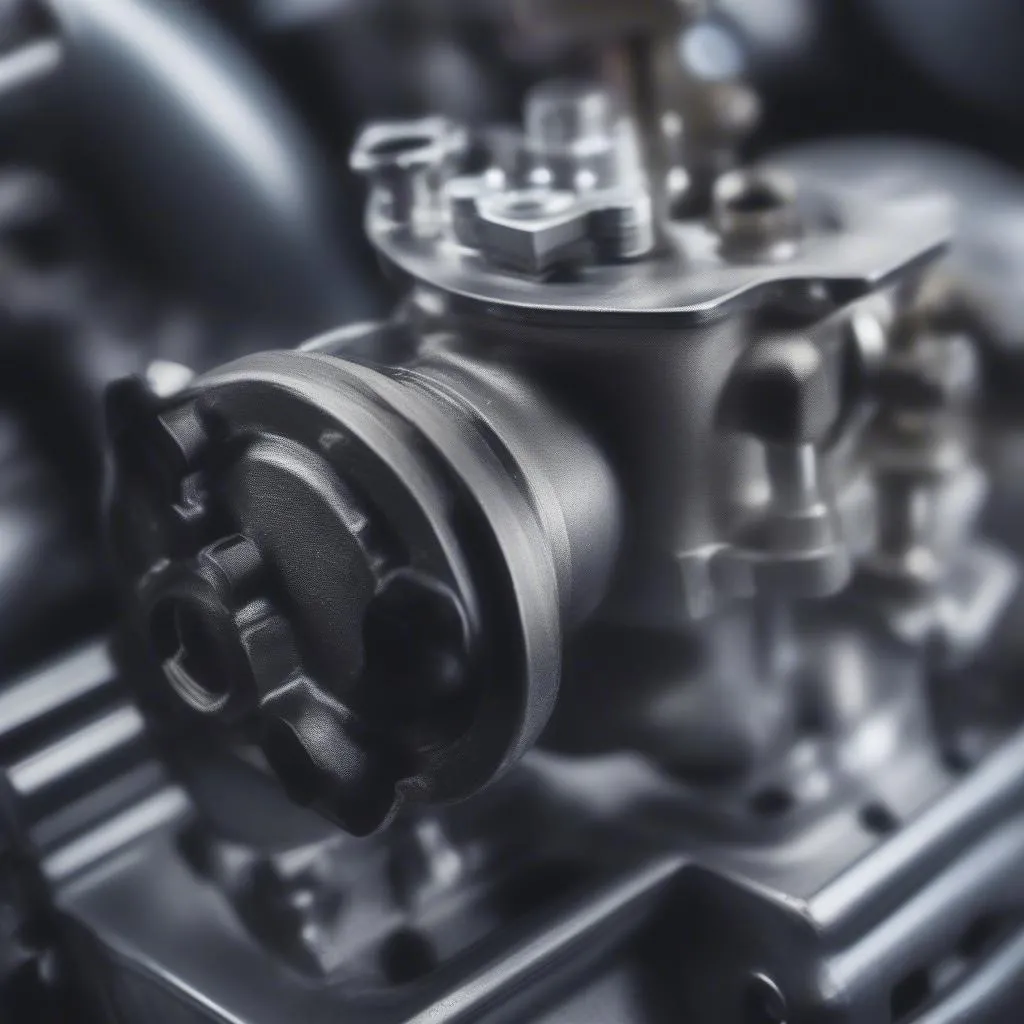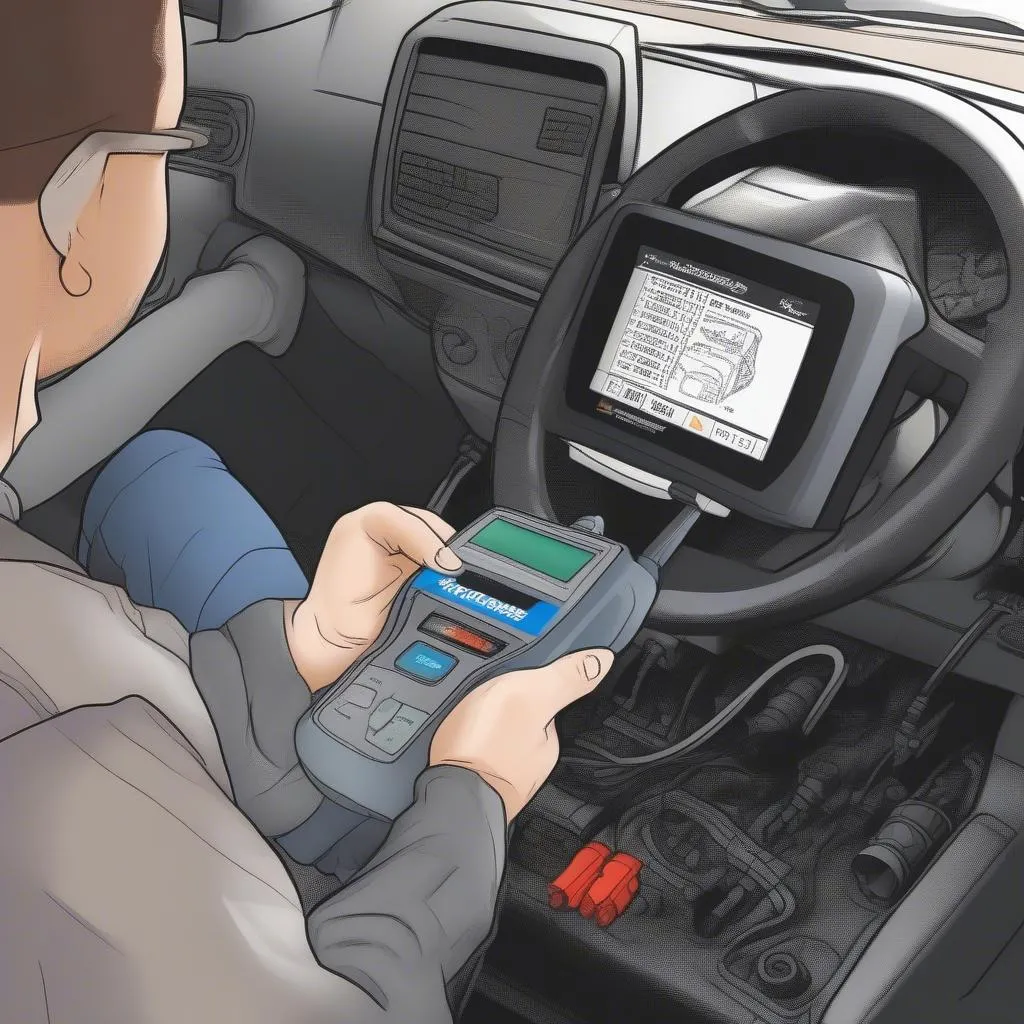Imagine this: You’re driving down the highway, enjoying the open road, when suddenly your car’s engine light illuminates. You pull over, check your car, and everything seems fine. You restart the car, the light goes off, and you continue driving. But then, the light comes back on again. This can be frustrating, especially if you’re not sure what’s going on.
One possible reason for your car’s check engine light could be the P0401 OBD code, which indicates an issue with the Exhaust Gas Recirculation (EGR) system. In this article, we’ll delve into the details of the P0401 OBD code, understand its implications, and learn how to address it.
What Does P0401 OBD Code Mean?
The P0401 OBD code is a diagnostic trouble code that appears when the vehicle’s computer detects a problem with the EGR system. This system plays a crucial role in reducing harmful emissions by recirculating exhaust gases back into the engine’s combustion chamber. The EGR system relies on a valve to control the flow of these gases, and a sensor to monitor the EGR flow.
Understanding the P0401 OBD Code from a Mechanic’s Perspective
From a mechanic’s standpoint, the P0401 code signifies a malfunction within the EGR system. This malfunction could be a faulty EGR valve, a clogged EGR passage, a malfunctioning EGR sensor, or even a problem with the vacuum system that controls the EGR valve.
The Technical Side of P0401 OBD Code
Technically, the P0401 code means that the engine control module (ECM) has detected that the EGR flow is not within the specified range. This can be due to a number of factors, including:
- EGR Valve Stuck Open or Closed: This can be caused by a mechanical issue with the valve itself, or by a problem with the vacuum system that controls the valve.
- Clogged EGR Passage: Over time, the EGR passage can become clogged with carbon buildup, restricting the flow of exhaust gases.
- Faulty EGR Sensor: The EGR sensor monitors the flow of exhaust gases and sends this information to the ECM. If the sensor is faulty, it can send incorrect information to the ECM, leading to the P0401 code.
- Other Issues: Problems with the vacuum system, wiring, or the ECM itself can also contribute to the P0401 code.
The Financial Aspect of P0401 OBD Code
The P0401 code can be a costly issue to repair, as the EGR system is a complex and vital part of your car’s emissions control system. A clogged EGR valve can be cleaned or replaced, while a faulty sensor or valve will need to be replaced. Depending on the make and model of your vehicle, the cost of replacing the EGR system components can range from a few hundred dollars to several thousand dollars.
Common Symptoms of P0401 OBD Code
While the check engine light is the most common symptom of a P0401 code, you might also notice other symptoms like:
- Reduced Engine Power: If the EGR valve is stuck closed, the engine will run leaner, resulting in less power.
- Rough Idle: A faulty EGR system can cause the engine to idle roughly, particularly at low speeds.
- Increased Fuel Consumption: A faulty EGR system can lead to less efficient combustion, resulting in higher fuel consumption.
- Exhaust Smoke: If the EGR valve is stuck open, you might notice black smoke coming out of the exhaust pipe.
How to Deal with P0401 OBD Code
If you see the check engine light and suspect a P0401 code, the first step is to have your vehicle diagnosed by a qualified mechanic. They can use a diagnostic scanner to read the trouble codes and identify the specific problem.
Here’s what you can expect during the diagnosis and repair process:
- Diagnosis: The mechanic will use a diagnostic scanner to read the trouble codes and inspect the EGR system for any visual signs of damage or clogging.
- Inspection: The mechanic will check the EGR valve, EGR passage, EGR sensor, and vacuum system for any issues.
- Cleaning: If the EGR valve is clogged, the mechanic will clean it using a special cleaning solution.
- Replacement: If the EGR valve, sensor, or other components are faulty, they will need to be replaced.
FAQs about P0401 OBD Code
Here are some frequently asked questions about the P0401 OBD code:
Can I drive with a P0401 code?
It is not advisable to drive with a P0401 code. While your car may still run, the faulty EGR system can lead to reduced engine power, increased fuel consumption, and potential damage to the engine.
What if I ignore the P0401 code?
Ignoring the P0401 code can lead to more serious issues, such as engine damage, increased emissions, and potentially even a failed emissions test.
Can I fix the P0401 code myself?
While it is possible to clean or replace the EGR valve yourself, it is recommended to have a qualified mechanic diagnose and repair the problem. The EGR system is a complex part of the vehicle, and improper repairs can lead to further issues.
What are some other related codes?
Other related codes that you may encounter include:
- P0402: EGR System A Malfunction
- P0403: EGR System B Malfunction
- P0404: EGR Flow Excessive
- P0405: EGR Flow Insufficient
What Next?
If you’re encountering the P0401 OBD code, it’s crucial to address it promptly to ensure your vehicle’s performance and longevity.
We encourage you to explore our website for more information about other OBD codes, common car problems, and detailed guides on various car maintenance tasks.
For expert assistance with your car’s diagnostics and repairs, contact us at +84767531508. We have a team of certified mechanics available 24/7 to help you get back on the road.
 EGR Valve
EGR Valve
 OBD Scanner
OBD Scanner
 Emissions Test
Emissions Test